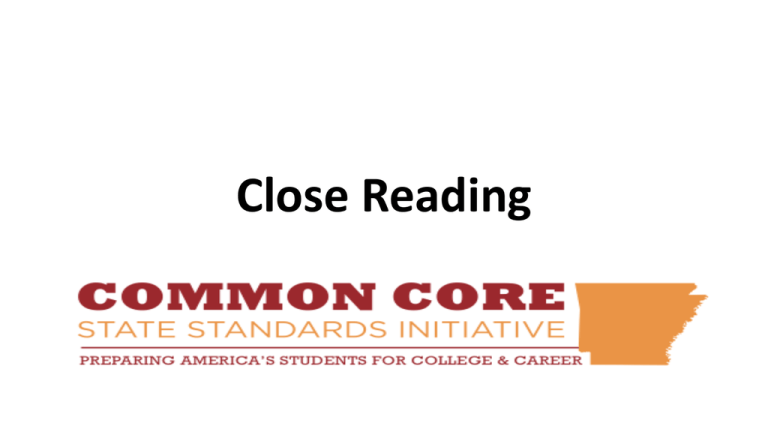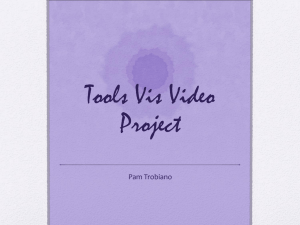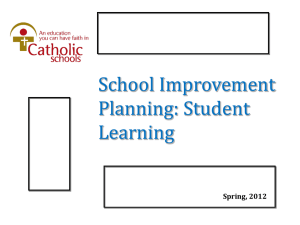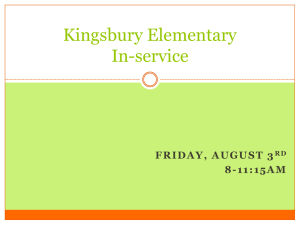Close Reading - AETN - Common Core Arkansas
advertisement

Close Reading AGENDA • Demands of complex text on the reader • Close reading tools for comprehending complex text • Question and answer opportunities with ADE Panel The Big Shifts 1. 2. 3. 4. 5. 6. 7. 8. Appropriately Complex Texts Increased Reading of Informational Texts Content Area Literacy Close Reading Text-dependent Questions Academic Vocabulary Argumentative Writing Short and Sustained Research Projects http://ideas.aetn.org/commoncore/strategic-plan Key Features of the Standards Reading: Text complexity and the growth of comprehension “…equal emphasis on the sophistication of what students read and the skill with which they read.” CCSS Introduction, page 8 “Staircase” of Increasing Text Complexity • CCSS Reading Standard 10 • CCSS, Appendix A, page 10 CCSS, K-5, pages 11-12 CCSS, 6-12, pages 37-38 Three Part Model for Measuring Text Complexity CCSS, Appendix A, page 4 Qualitative Measures Considerations: 1. Levels of meaning or purpose 2. Structure 3. Language conventionality and clarity 4. Knowledge demands CCSS, Appendix A, pages 5-6 Quantitative Measures Considerations: • Word length • Word frequency • Word difficulty • Sentence length • Text length • Text cohesion CCSS, Appendix A, page 7 Reader and Task Considerations: • Motivation • Knowledge and experience • Purpose for reading • Complexity of task assigned regarding text • Complexity of questions asked regarding text CCSS, Appendix A, pages 7-8 PARCC Model Content Frameworks “Close, analytic reading stresses engaging with a text of sufficient complexity directly and examining its meaning thoroughly and methodically, encouraging students to read and reread deliberately.” PARCC MCF, page 6 http://www.parcconline.org/parcc-content-frameworks K-5 “…students must read widely and deeply from among a broad range of high-quality increasingly challenging literary and informational texts.” Note on Range and Content, CCSS, page 10 6-12 “…students must grapple with works of exceptional craft and thought whose range extends across genres, cultures, and centuries.” Note on Range and Content, CCSS, page 35 CCR Anchor Standards for Reading • K-5, page 10 • 6-12, page 35 Close Reading Requires: •Understanding your purpose in reading •Understanding the author’s purpose in writing •Seeing ideas in a text as being interconnected •Looking for and understanding systems of meaning •Engaging a text while reading •Getting beyond impressionist reading •Formulating questions and seeking answers to those questions while reading Systematic and Explicit Teaching Model Systematic: Skills and concepts are taught in a planned, logically progressive sequence. Explicit: • Direct Explanation • Teacher Modeling • Guided Practice • Independent Practice • Application Strategies for Close Reading • • • • • • • Story Mapping SOAPS Text-Self-World Connections Three Levels of Questions Arguments and Evidence Appeals – Logical, Ethical, Emotional Assumptions Story Map K-5 Graphic Organizer • Setting • Characters • Problem or Goal • Sequence of Events • Outcome • Theme Identifying Theme 1. Was the outcome of the story good or bad? Explain why. 2. What lesson does the main character learn? 3. What lesson did you learn from the story? SOAPS • • • • • Speaker Occasion Audience Purpose Subject Connections • • • • Text to Self Text to Itself Text to Text Text to World Three Levels of Questions • Right There • Think and Search • Author and Me Arguments and Evidence • Identify the claim(s) • Analyze the evidence Appeals • Logical (logos) • Ethical (ethos) • Emotional (pathos) Assumptions • Explicit or implicit Students Who are College and Career Ready: • demonstrate independence, • build content knowledge, • respond to demands of audience, task, purpose, and discipline, • comprehend and critique, • value evidence, • use technology and digital media, and • come to understand other perspectives and cultures. CCSS, page 7 In Closing… • Demands of complex text on the reader • Close reading tools for comprehending complex text





